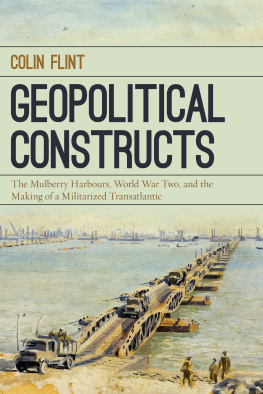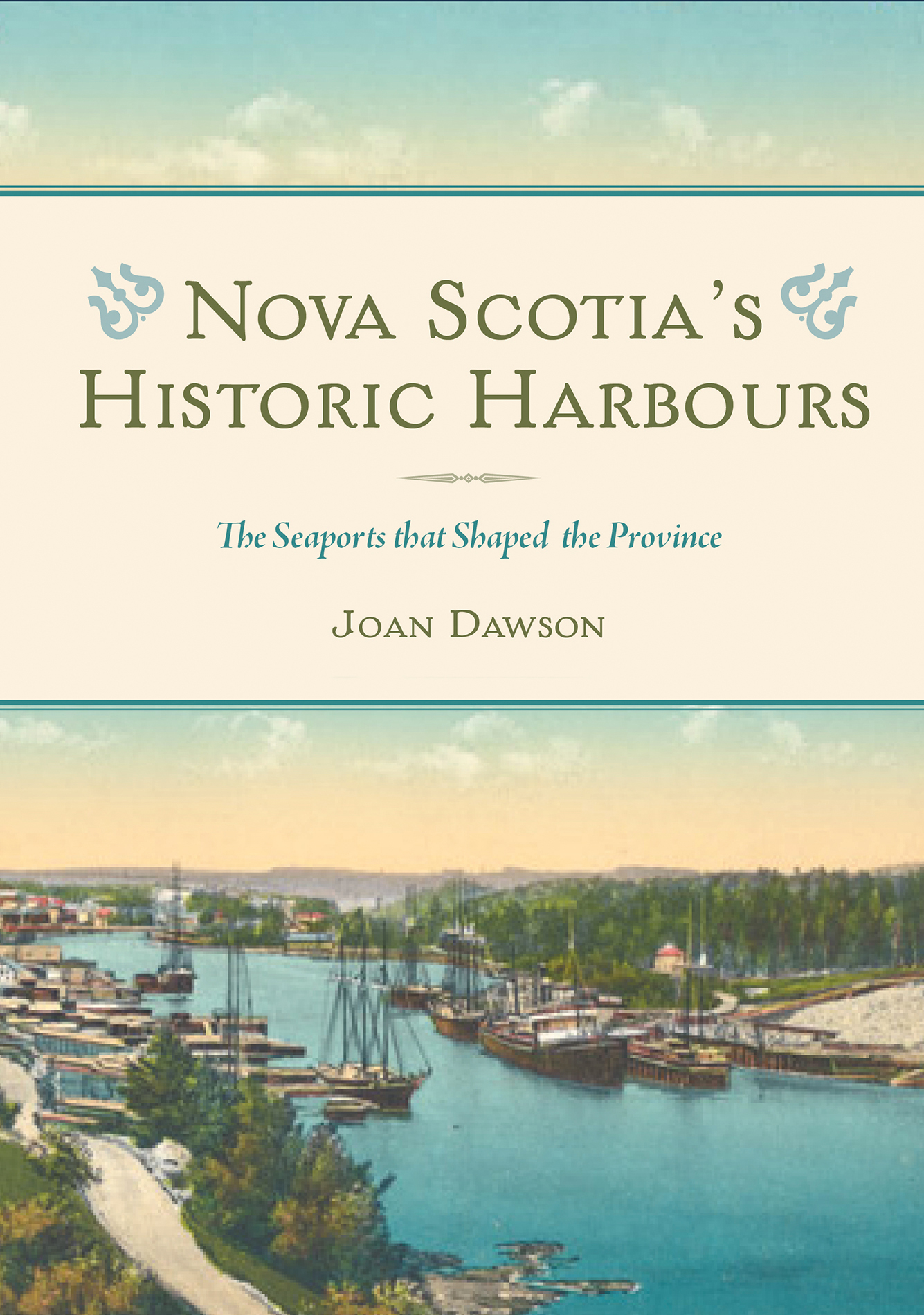All rights reserved. No part of this book may be reproduced, stored in a retrieval system or transmitted in any form or by any means without the prior written permission from the publisher, or, in the case of photocopying or other reprographic copying, permission from Access Copyright, 1 Yonge Street, Suite 1900, Toronto, Ontario M5E 1E5.
Title: Nova Scotias historic harbours : the seaports that shaped the province / Joan Dawson.
Names: Dawson, Joan, 1932- author.
Description: Includes bibliographical references.
Identifiers: Canadiana (print) 20200184997 | Canadiana (ebook) 20200185004 | ISBN 9781771088589 (softcover) | ISBN 9781771088596 (HTML)
Subjects: LCSH: HarborsNova ScotiaHistory. | LCSH: Port citiesNova ScotiaHistory. | LCSH: Nova ScotiaHistory.
Nimbus Publishing acknowledges the financial support for its publishing activities from the Government of Canada, the Canada Council for the Arts, and from the Province of Nova Scotia. We are pleased to work in partnership with the Province of Nova Scotia to develop and promote our creative industries for the benefit of all Nova Scotians.
To all those who came from away to Nova Scotias harbours and made this place their home
Preface
Im what Maritimers call a CFA, or come from away. I dont find the term offensive, merely a statement of fact. Except for Indigenous Peoples, all of us, or our ancestors sometime in the past, came from away. Over the years, people came to Nova Scotia for different reasonssome as explorers, fishers, or traders, some looking for work, some escaping from intolerable social or political conditions, some seeking adventure, or love, or a means to improve their status in society, some in the course of their military duties, and some quite accidentally. Whatever their motives, until well into the second half of the twentieth century, when air travel became more affordable and more convenient, most visitors and immigrants arrived in Nova Scotia through one of the provinces many harbours.
I arrived in Halifax Harbour from England on a transatlantic steamship that carried passengers between Liverpool, St. Johns, Halifax, and Boston. With a thirty-six-hour stopover in St. Johns, the journey took ten days. This was a comfortable way to travel, and a stark contrast to what early settlers endured as their wooden sailing vessels lurched through the ocean for weeks, and even months, on their way from Europe. Food and water supplies often ran low, and without refrigeration, if the voyage was long, they were foul well before the vessel arrived. Travellers were packed into cramped spaces below decks, and in stormy weather, conditions must have been almost unendurable. Illness was common, some women gave birth in deplorable circumstances, and those people who died during the passage were buried at sea. Other settlers had a shorter voyage, on coastal vessels from elsewhere in the Maritimes or from ports on the Eastern Seaboard.
Whatever their origins, they were looking for new beginnings, and they came into Nova Scotias harbours with hope in their hearts. Once they had disembarked, newcomers might face the daunting tasks of clearing land around the harbour, building homes, and somehow scraping a living from the lakes, the sea, and the forest.
Some of the communities they established were more successful than others, and all endured fluctuations in their economic lives. They witnessed battles, shipwrecks, privateering and piracy, celebrations, and tragedies. But Nova Scotias coastal cities, towns, and villages began with the hard work of settlers who came from away and made this place their home.
I spend time in summer in a cottage overlooking a river where Mikmaw canoes once travelled, where some of the earliest French settlers landed, where ships were built in little coves, and where, in the nineteenth century, hundreds of merchant vessels came and went from the port at the head of tide. A harbour across the river was once home to a large fleet of fishing schooners, and inshore fishers worked from little harbours on the islands. Outfitters, fish packing plants, and ship owners operated in many small settlements. The sight and smell of the days catch drying on fish flakes all along the shore was ever-present until the 1950s. All this has changed, but the rich history of our coastal communities is preserved in museums around the province, and in the work of local historians who ensure, in print or online, that the past is not forgotten. I am grateful to them.
JD
Introduction
The beautiful harbours along Nova Scotias rugged shoreline take many forms. Some are broad and studded with islands, others are long inlets carved out by glaciers during the last Ice Age. For thousands of years before Europeans came here, the rivers running into these waters brought the Indigenous Peoples from their inland winter communities to their summer fishing grounds around the harbours. The Mikmaq have lived for many centuries in what they call Mikmaki, comprising the area that many of us now know as Nova Scotia. Traditionally, they had permanent and seasonal villages around the bays and coves, and along the shore. They had seasonal encounters with fishers from Europe for at least two centuries. The Mikmaq confirmed their alliance with the French through ceremonies, and later, ceremonial treaties were made with the British, followed by written treaties. The First Nations did not surrender their land, and though relations between them and the British were initially difficult, and remain imperfect, today we live together in peace and friendship.
European settlement began in the seventeenth century, and by the nineteenth century many harbours had been transformed into busy ports with shipyards, fishing vessels, fish processing plants, and merchant shipping. Today, Halifax Harbour is home to Nova Scotias naval vessels, huge container ships, and massive cruise liners, and to smaller boats offering harbour tours, as well as ferries and private sailboats. Smaller, quieter harbours have wharves stacked with lobster traps, with fishing boats moored nearby.
Many of the sheltered harbours along the Atlantic coast were known to European fishing crews from about the time John Cabot was conducting his explorations in the late fifteenth century. In their wooden sailing vessels, they made the perilous journey across the Atlantic Ocean every spring and spent the summer fishing for cod. Most Europeans were then Roman Catholic, with obligatory fasting on Fridays and during the six weeks of Lent, during which time meat was forbidden although fish could be consumed. This resulted in a lucrative market for dried salt fish that could be stored and transported without spoilage for use when required. The fishing boats returned to Europe in the fall laden with processed fish, and also with another valuable commodityfurs.
After the spring melt the Mikmaq, who spent the winter inland, travelled to the coast. They harvested shellfish, as well as salmon and other inshore species. In this way, the people who had traditionally fashioned knives, tools, and weapons from stone first encountered the fishers whose implements were made of iron. A satisfying trading relationship was established when the Mikmaq brought furs which they exchanged for tools, implements, cloth, and decorative beads, all manufactured in France and Spain.









